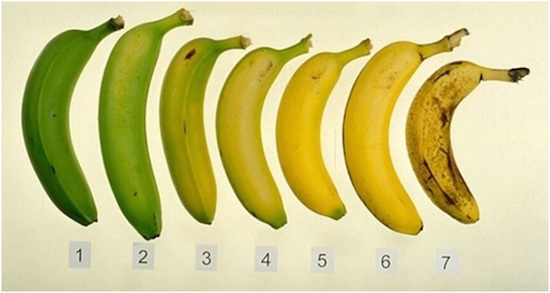Did you know that the nutritional properties of those bananas hanging in your kitchen change as they grow riper? As they ripen, they become sweeter. Why? Because there are enzymes in the banana that begin to break down starches, which are generally sweet, into sugar. This also makes a banana easier to digest for your gut. Additionally, Japanese researchers recently discovered something fascinating about bananas; as a banana ripens, it produces more antioxidants than its fresher brethren contain.

When the banana has dark spots on the peel, it produces what’s called TNF, or Tumor Necrosis Factor, a substance that combats cancer and abnormal cells. The darker the spots, the more powerful the banana at killing cancer cells. A ripe banana is 8 times more effective in boosting the body’s immune system than a fresh banana is.
So when’s the best time to eat a banana? When it’s fully ripe.
But it’s worth noting, if you suffer from Type II Diabetes, you may want to eat a right banana with nut butter. The fats in the nut butter will slow down sugar absorption in your bloodstream so it doesn’t hit you all at once, making it easier for your body to break down. ~Simple Organic Life
